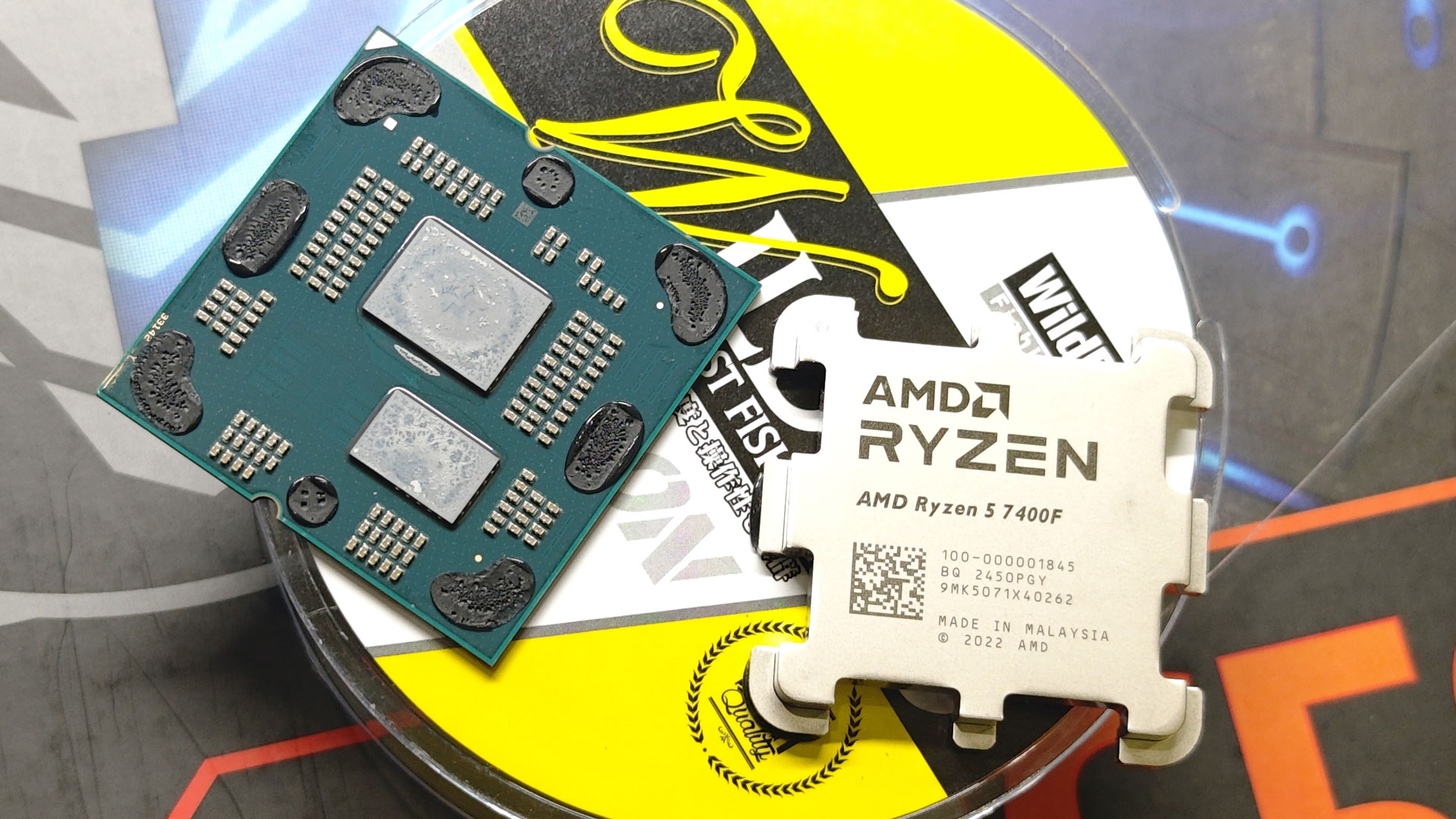
A user review of the Ryzen 5 7400F at Bilibili suggests performance similar to the 7500F with superior binning, at least when the processor is not thermally constrained (via Harukaze at X). Further inspection by delidding the CPU reveals that AMD has opted for simple thermal paste instead of Solder Thermal Interface Material (STIM) between the Integrated Heat Spreader (IHS) and the CPU die, likely as a cost-saving measure. With a low price tag of just $115 (in China), AMD had to cut corners somewhere and it seems we’ve found the answer.
To recap, last month AMD silently released the hexacore Ryzen 5 7400F, standing as the most affordable Raphael-based CPU for consumers. What separates the 7400F from the 7500F is inferior binning as reflected in the clock-speeds. The Ryzen 5 7400F offers six cores and twelve threads based on AMD’s Zen 4 architecture. Employing Raphael silicon underneath nets it 32MB of L3 cache and 6MB of L2 cache, with a base TDP of 65W (88W PPT). In terms of clock speeds, the 7400F is advertised with a base frequency of 3.7 GHz, reaching as high as 4.7 GHz, 300 MHz slower than the 7500F.
The reviewer’s test bench features the Ryzen 5 7400F paired with DDR5-6000 CL36 memory on MSI’s MPG 850 Edge Ti WiFi motherboard. The Bilibili-based reviewer specified two AIOs for the test namely: the Taiyu T360 Pro and the DeepCool LP360. With all settings at default and only EXPO enabled, the Ryzen 5 7400F falls 6% short of the 7500F in the Cinebench R23 single-core benchmark.
At the default 88W PPT, the 7400F easily hits Tjmax (95 degrees Celsius) with a liquid cooler, a direct consequence of the inferior interface material. When the package power is lifted to around 100W, the CPU hits 105 degrees Celsius and promptly shuts down. After manually adjusting the voltage and frequency in the BIOS, the 7400F clocked at 5.05 GHz with a temperature of 96 degrees Celsius.
The reviewer didn’t test the 7400F with PBO, but you’d probably have to spend more time fine-tuning the offsets to hit 5 GHz at comfortable temperatures. STIM has several advantages for CPUs as it’s not only more thermally conductive but also lasts longer than normal thermal grease. Again, this has no perceivable impact on the average consumer who doesn’t have the time or isn’t interested in overclocking. For enthusiasts or even budget gamers looking to get the most out of their processor, the Ryzen 5 7500F should still be the superior choice.
#Ryzen #7400F #thermal #paste #solder #chip #hits #max #temps #stock #TDP


